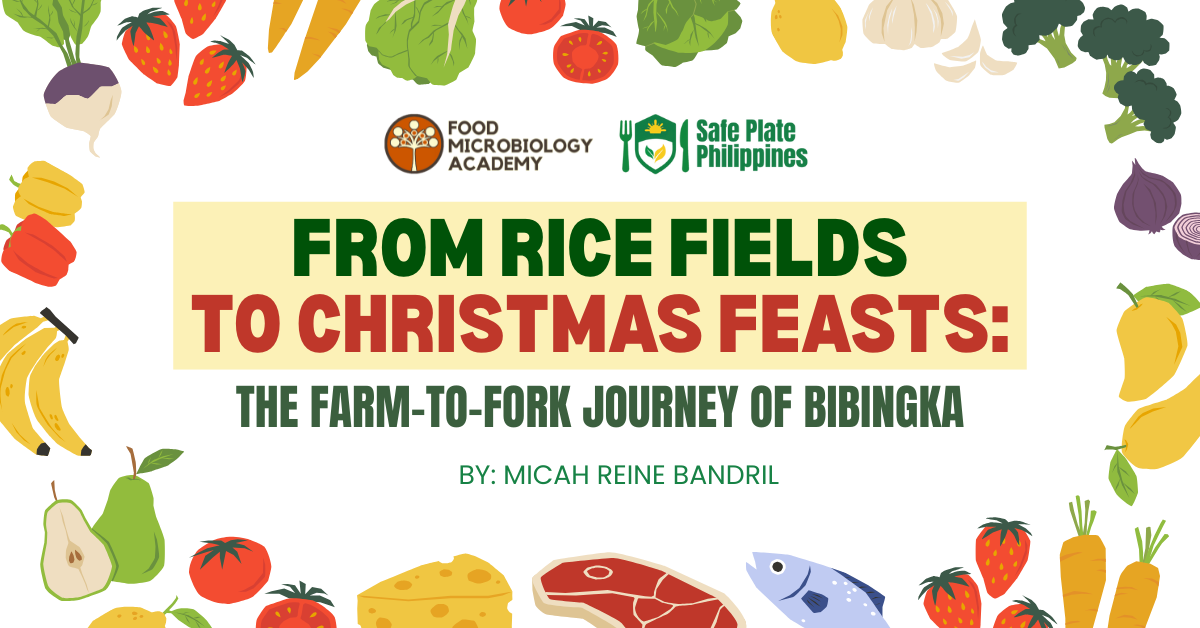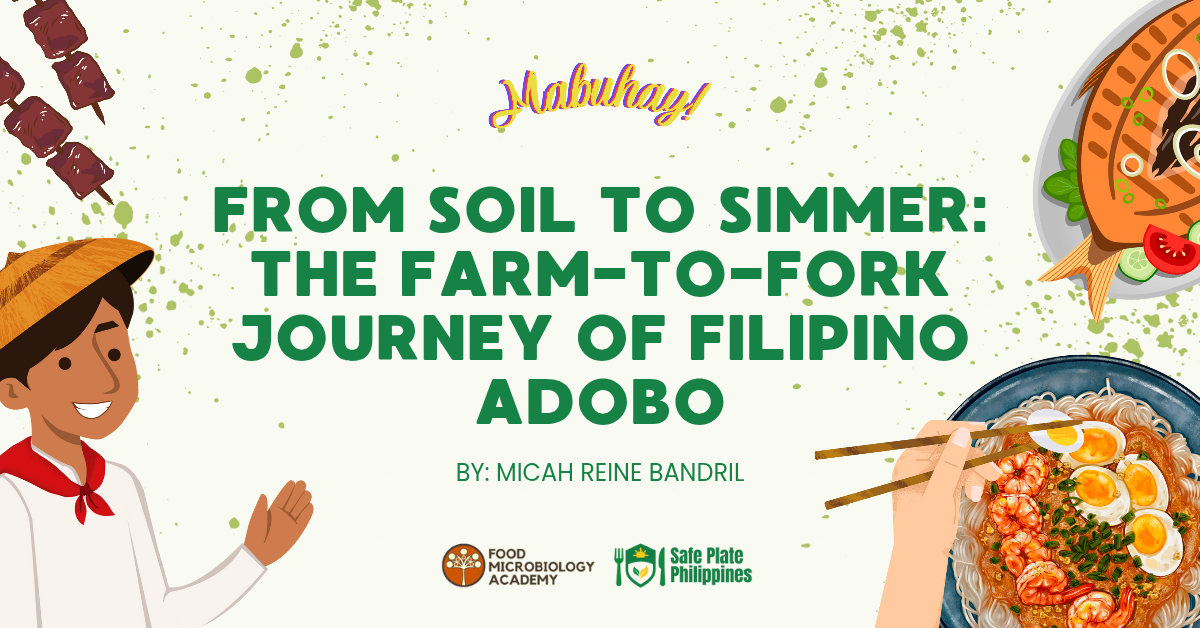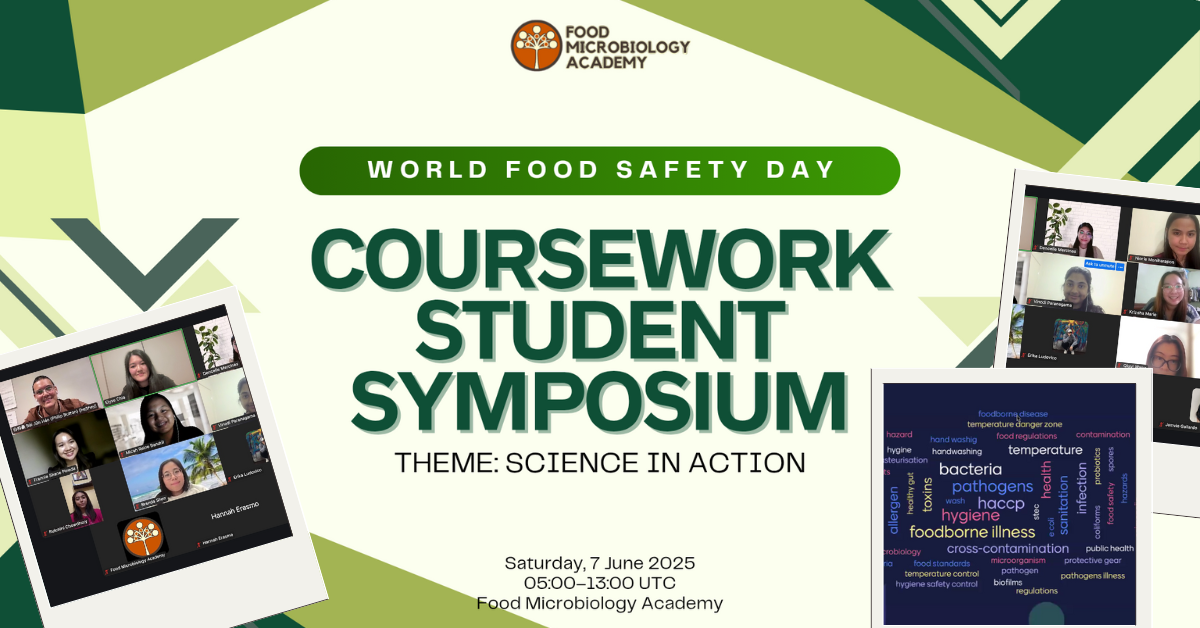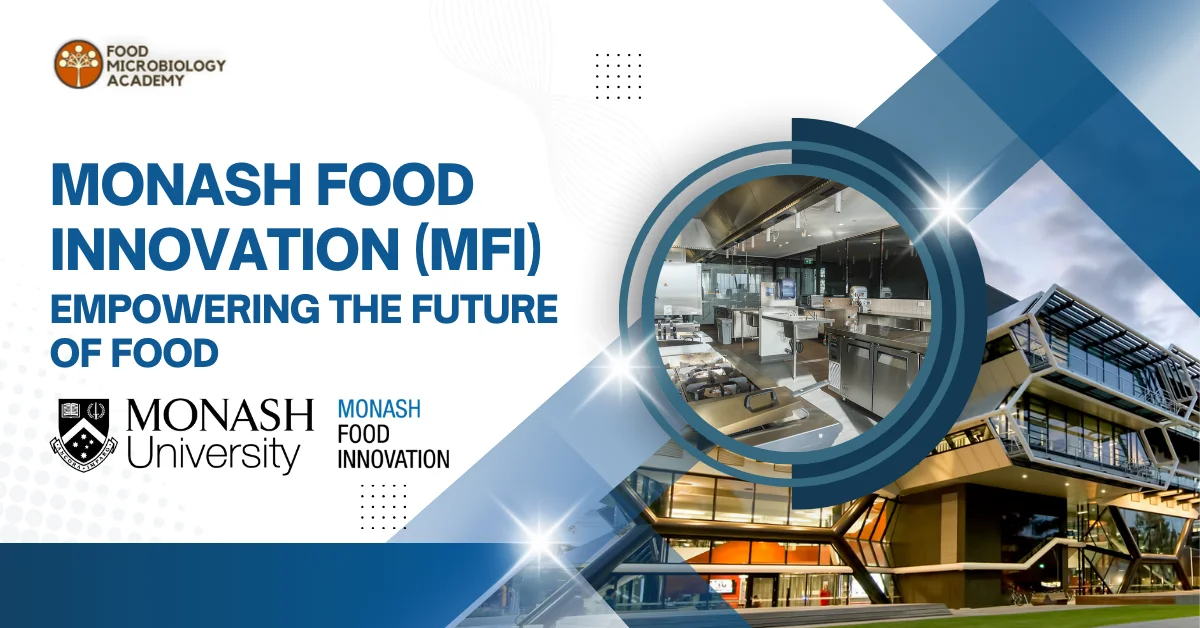From Rice Fields to Christmas Feasts: The Farm-to-Fork Journey of Bibingka
This blog is written by Micah Reine Bandril under the theme “From Farm to Fork” and as part of the #SafePlatePH digital advocacy campaign promoting practical, science-based food safety for Filipino homes. Photo from: Friend Cheap Menu Can you think of a snack that oozes the warm smell of coconut milk mixed with the earthy scent of freshly ground rice, one that rises from clay pots lined with banana leaves? You got it! It is bibingka, the beloved Filipino rice cake that fills the air outside churches during the early mornings and evenings of the Christmas season. As families arrive together for Simbang Gabi, this delicious treat has been something they look forward to as it has been a part of Filipino tradition for generations. Now I want you to think about where bibingka’s ingredients come from, and how it makes its way from the farm to your plate. What kind of processes does it undergo before you get your hand on it? Bibingka is a type of rice cake native to the Philippines, traditionally made from galapong (ground soaked glutinous rice), coconut milk, margarine, and sugar (Merano, 2021). Made with sweet rice flour, rich coconut milk, and just the right amount of sugar, bibingka definitely showcases the distinct flavors that we, Filipinos, enjoy (Janelle, 2023). This cherished dessert is a prime example of the country’s rich agricultural heritage, culinary craftsmanship, and cultural identity of the Filipino people. Most especialy After Simbang Gabi services, stalls selling Filipino delicacies like bibingka create a warm atmosphere that brings the togetherness among families (Gabuya, 2023). If you’re interested in tracing the farm-to-fork journey of bibingka, this blog post is for you! In the following paragraphs below, we will be examining how this beloved rice cake travels from the fertile fields of Filipino farmers to the warm hands of eager consumers gathered outside churches and in family kitchens. Agricultural Origins: The Farm Stage Photo from: Eco-Business The journey of bibingka starts in the agricultural environment of the Philippines, where various crops help develop its flavor and texture. Key Ingredients and Where They Come From Rice serves as the foundation of bibingka, with specific kinds that are used for their distinct properties. Traditional bibingka is made from ground soaked glutinous rice (galapong), which provides its specific texture (Bebs, 2020; Janelle, 2023). Our country produced around 20.06 million metric tons of unmilled rice in 2023, which marks the highest production volume within the recorded period (Balita, 2025). However, production has encountered roadblocks, with rice production decreasing by 5.5% in the first half of 2024, dropping from 9.05 million MT in H1 2023 to 8.53 million MT in H1 2024 (PCAARRD’s ISP-IS, n.d.). Rice farmers along the country use different cultivation methods, from traditional transplanting in flooded paddies to more modern direct seeding techniques. The process involves careful land preparation, seedling cultivation, transplanting, water management, and harvesting, which usually takes 120-150 days from planting the seed to its actual harvest. Coconut provides both the coconut milk that gives rise to bibingka’s creamy texture and the fresh grated coconut used as its topping. The country produced near 14.89 million metric tons of coconut in 2023, though this reflected a drop from the previous year (Balita, 2025). There are 340 million coconut palms covering 3.502 million hectares of agricultural land in the Philippines, producing more than 14 billion nuts per year and providing employment to 25 million Filipinos in the coconut sector (Moreno et al., 2020). Coconut palms, which bear nuts throughout the year once they mature, start bearing in 6-10 years and keep bearing for 60-80 years. The harvesting is done by skilled climbers who climb tall palms to get mature coconuts, which are then processed to get the meat and milk used in making bibingka. Local chicken eggs pave the way for the texture and richness of bibingka. Raising poultry in the Philippines ranges from small backyards to commercial farms, but native chicken breeds are usually preferred for their great taste. Aside from that, there is also the use of the distinctive salted duck eggs (itlog na maalat) as a popular topping over bibingka. Sugar, which is mainly from sugarcane, sweetens the rice cake. Government agricultural statistics show that sugarcane is still one of the Philippines’ top agricultural exports and top crops production items (PCAARRD’s ISP-IS, n.d.). Particularly, the growth of sugarcane in the Philippines involves planting cane stalks, where the growth is maintained for 12-18 months. After which it is harvested and processed in sugar mills to generate the granulated sugar used in the preparation of bibingka. Lastly, bibingka would not be complete without banana leaves as they are used for lining bibingka molds and imparting a slight hint of herbal aroma. This comes from the typical banana plants that are widely seen in the Philippines. After the mature leaves are harvested, they are washed and prepared for cooking purposes. This then requires careful picking and preparation to render them safe to eat and flexible. Seasonality and Sourcing The seasonality of farm work highly affects the production of bibingka. Coconuts are perennial, but rice crops are seasonally harvested according to variety and location. During the peak Christmas bibingka season, demand for fresh produce spikes, which poses a problem for local supply chains. Consequently, modern bibingka manufacture increasingly depends on a mixture of native and imported alternatives, specifically rice flour and coconut products. This comes at the expense of traditional authenticity in order to make way for commercial convenience and guaranteed supply. Processing and Transportation: From Farm to Market Photo from: Philstar.com The transformation of raw agricultural products into bibingka ingredients involves multiple processing stages that bridge the gap between farm and kitchen. Post-harvest Processing The conversion of raw farm produce into ingredients for bibingka constitutes a sequence of steps on the farm-to-kitchen link. The production cycle starts with a meticulous preparation of each ingredient. Rice is milled to dehusk and debran, soaked and milled into galapong, the fine rice paste that serves as the foundation of bibingka.







